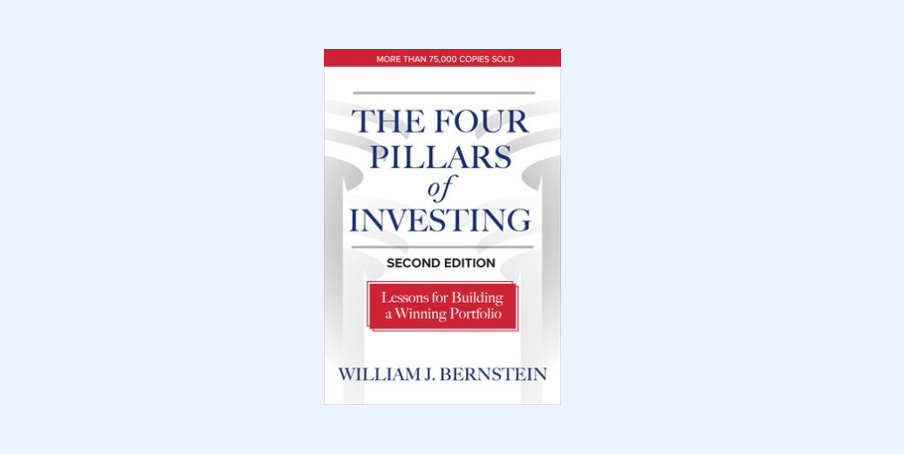Book review: the four pillars of investing

The author of this book, William J. Bernstein, is not your usual author. In fact, he hasn't only published financial books or founded an investment management firm, but before starting his finance career, he got a PhD in chemistry and MD (specialized in neurology).
The Four Pillars of Investing: Lessons for Building a Winning Portfolio is Bernstein's second book, and illutrates the modern portfolio theory, meaning to reduce risk and increase returns you must diversify the portfolio.
- Title: The Four Pillars of Investing
- Author: William J. Bernstein
- Originally published: 2002
- Pages: 352
This is an affiliate link and I wasn't paid to select the book. Your support helps keep Wealthy Parrot running at no extra cost to you. 🙌📚
The book in a nutshell
The book walks the reader across a journey to explain what Bernstein calls The Four Pillars of Investing:
- The theory of investing: theory and data relevant to everyday investing.
- The history of investing: a summary of the biggest market bubbles in history.
- The psychology of investing: behaviors that can negatively influence investing.
- The business of investing: an overview of stockbrokers and mutual fund companies behaviors.
The last part of the book focuses on how to build a portfolio and investment strategy.
My review
Bernstein's The Four Pillars of Investing is his second attempt at writing "a book about investing for the general audience". The first attempt was a book called "The intelligent asset allocator", published in 1996 that unfortunately received a lukewarm welcome by the general audience, due to its math dense content.
Bernstein's watchwords in producing The Four Pillars of Investing were "accessibility and enjoyment". He attempted to achieve so by using historical vignettes wherever possible to illustrate key financial concepts and keeping mathematical detail to a minimum.
As outlined above, the book is structured into 5 main sections, where the author walks the reader quite in detail over a multitude of topics, from an overview of the main financial products you can invest into and the macro rules behind them, to the biggest market bubbles in history (the past is often a useful teacher to avoid mistakes), to common pitfalls that can be avoided. The last section takes a few hypothetical investors, with different contexts and needs, and explains what their investment portfolios should contain.
The result is a book PACKED with info that requires some time to digest and appreciate fully. This also means that it is probably too content heavy for someone that has never read anything on the topic before. However, if you know at least some basics and want to take your knowledge one step further, this book will help you with it. The quality and quantity of content, will definitely help you to create an actionable plan to build or improve your portfolio, learning how to remove all the noise we get exposed daily.
A couple caveats: at the time of writing, the latest edition of the book is from 2010 hence it is a bit outdated when it comes to stocks/funds suggestions in the investment strategy chapters (most of the ideas and principles are still valid though). Also, the book is written using the financial tools available in USA, hence if you don't live there, things like Roth accounts or access to specific funds will not be possible.





